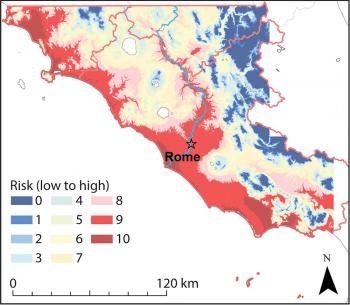American Journal of Archaeology | The Journal of the Archaeological Institute of America
You are here
Villa Estates and Malaria Risk in Roman Central Italy
April 2024 (128.2)
Villa Estates and Malaria Risk in Roman Central Italy
Malaria has persisted in Italy since the Roman Imperial period, perhaps since as early as the second century BCE. Yet little is known regarding Romans’ everyday interactions with this historically oppressive mosquito-borne disease, knowledge of which is crucial for understanding the broader significance of malaria in Roman history. This is in part due to the limitations of current approaches for studying ancient malaria, which focus primarily on diagnosing specific incidences of infection. Drawing on landscape epidemiology and contemporary malariology, this article shifts focus toward a more holistic understanding of the multifaceted determinants of malaria and its transmission in antiquity, with particular emphasis on Roman villa estates in central Italy. It is argued that, despite the presence of malaria and the naturally high risk of transmission throughout much of the region, villa estates very likely reduced local risk of malaria transmission by utilizing a suite of agricultural practices that reduced local mosquito densities and separated susceptible hosts and malaria’s mosquito vectors. In addition to improving our understanding of the specific entanglement between Roman villa estate agriculture and malaria in central Italy, this article demonstrates the benefit of an interdisciplinary approach and the interpretive utility of archaeological evidence for ancient disease studies more broadly.
Villa Estates and Malaria Risk in Roman Central Italy
By David Pickel
American Journal of Archaeology Vol. 128, No. 2 (April 2024), pp. 243-277
DOI: 10.1086/728882
© 2024 Archaeological Institute of America


